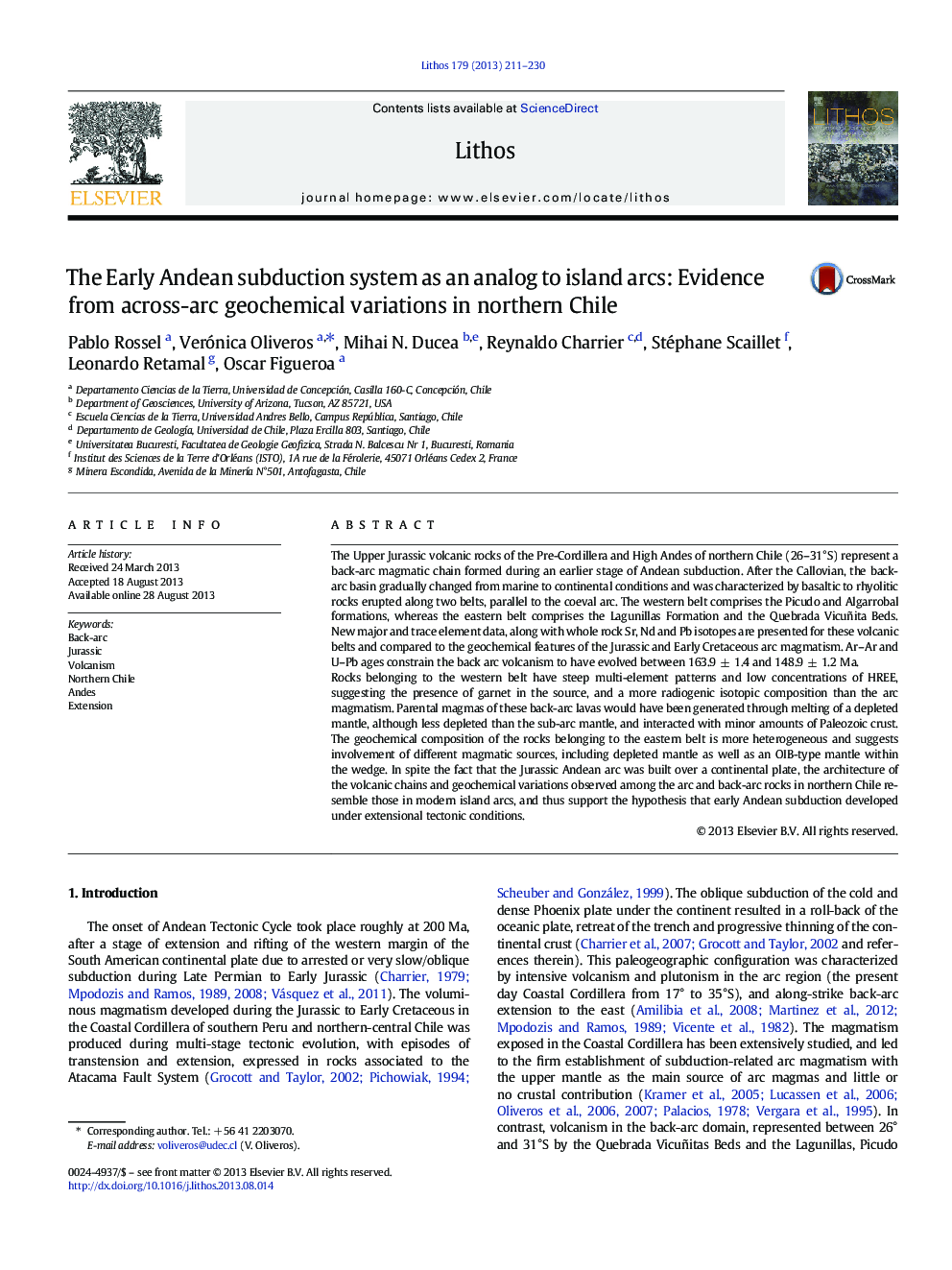| Article ID | Journal | Published Year | Pages | File Type |
|---|---|---|---|---|
| 4716213 | Lithos | 2013 | 20 Pages |
•We study four volcano-sedimentary Jurassic units that represent back-arc volcanism.•Volcanism occurred between ca. 163 and 149 Ma during emersion of the back-arc basin.•Geochemistry of volcanic rocks reflects extensional tectonic conditions.•Results indicate multiple sources in the genesis of the Jurassic back-arc volcanism.
The Upper Jurassic volcanic rocks of the Pre-Cordillera and High Andes of northern Chile (26–31°S) represent a back-arc magmatic chain formed during an earlier stage of Andean subduction. After the Callovian, the back-arc basin gradually changed from marine to continental conditions and was characterized by basaltic to rhyolitic rocks erupted along two belts, parallel to the coeval arc. The western belt comprises the Picudo and Algarrobal formations, whereas the eastern belt comprises the Lagunillas Formation and the Quebrada Vicuñita Beds. New major and trace element data, along with whole rock Sr, Nd and Pb isotopes are presented for these volcanic belts and compared to the geochemical features of the Jurassic and Early Cretaceous arc magmatism. Ar–Ar and U–Pb ages constrain the back arc volcanism to have evolved between 163.9 ± 1.4 and 148.9 ± 1.2 Ma.Rocks belonging to the western belt have steep multi-element patterns and low concentrations of HREE, suggesting the presence of garnet in the source, and a more radiogenic isotopic composition than the arc magmatism. Parental magmas of these back-arc lavas would have been generated through melting of a depleted mantle, although less depleted than the sub-arc mantle, and interacted with minor amounts of Paleozoic crust. The geochemical composition of the rocks belonging to the eastern belt is more heterogeneous and suggests involvement of different magmatic sources, including depleted mantle as well as an OIB-type mantle within the wedge. In spite the fact that the Jurassic Andean arc was built over a continental plate, the architecture of the volcanic chains and geochemical variations observed among the arc and back-arc rocks in northern Chile resemble those in modern island arcs, and thus support the hypothesis that early Andean subduction developed under extensional tectonic conditions.
